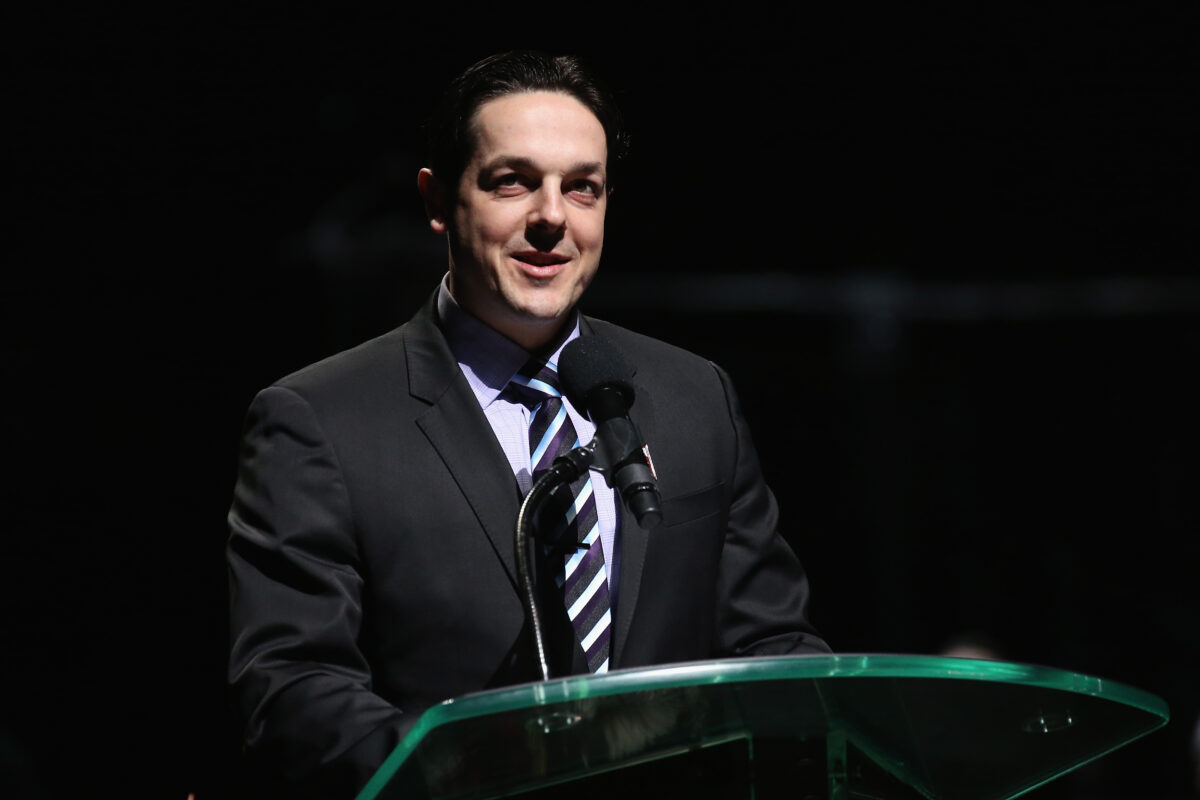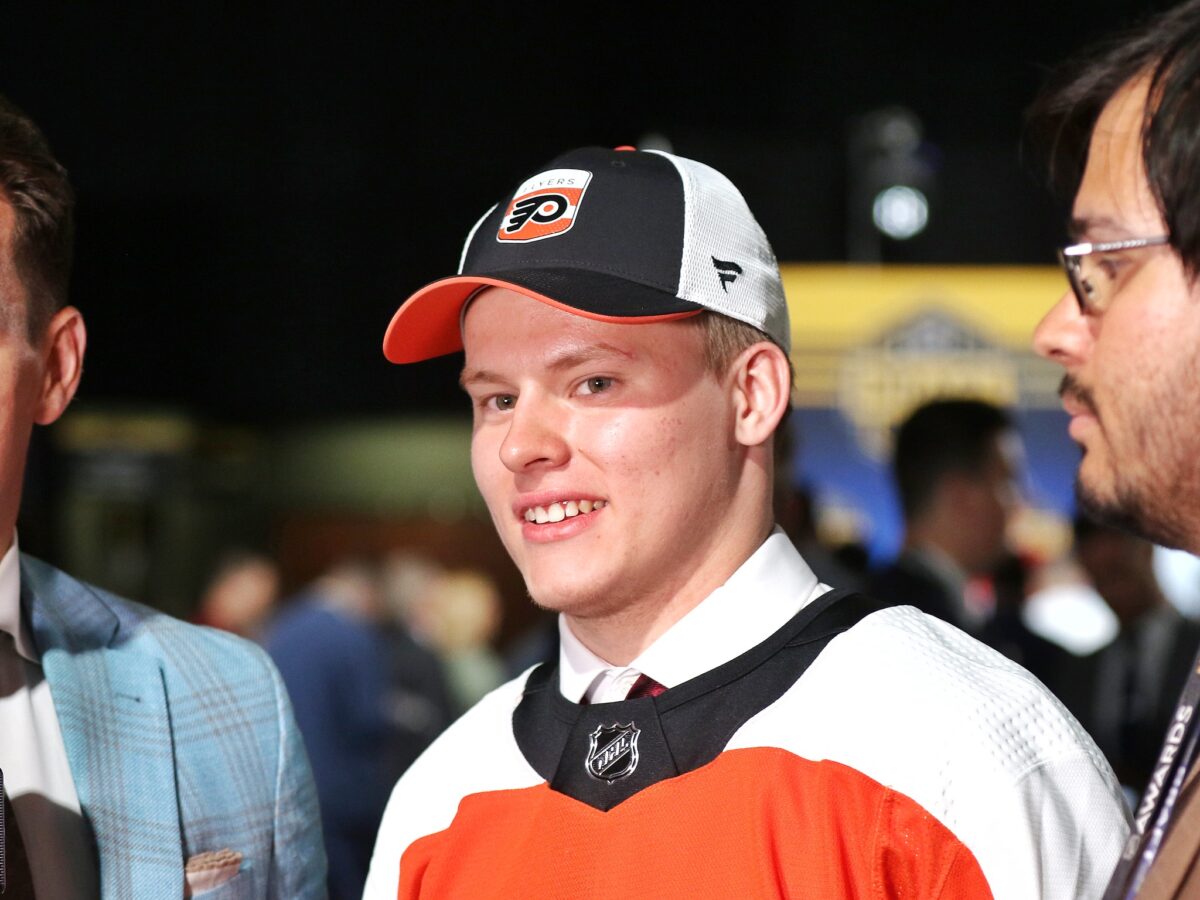In their “New Era of Orange”, the Philadelphia Flyers and their new management explicitly stated that they’d be rebuilding. To their credit, it did seem like they were for a while. However, considering how they have operated these last few months, it’s clear that this is no ordinary rebuild—that’s because it’s not a rebuild at all.
The Flyers are actually retooling, which deals with trying to stay competitive by keeping veterans on the roster as young players develop. It’s not the vision that general manager (GM) Danny Briere originally implied, but it can work all the same. How is that?
The Flyers Have Officially Abandoned the Rebuild
To first understand how the Flyers’ retool might work, we must first establish why they are indeed in a retool. With the Orange and Black standing pat on the trade front so far through July 4, 2024, we can officially stop using the word “rebuild” when describing the team—that’s not the approach that they are taking. No matter how many times Briere says he is rebuilding, his actions don’t back up his claims. There are many reasons for this.

In the last 10 offseasons, the Flyers have traded one roster player after the window for free agency has opened: Tye McGinn for a third-round pick back in 2014. With this in mind, it’s safe to assume that Philadelphia is done trading—they haven’t made one involving a player this offseason. Briere has traded just one roster player in the last calendar year, making it hard to rationalize how the team is rebuilding—is there any example of an openly rebuilding club being so conservative? With several veterans who objectively don’t fit the rebuilding timeline such as Travis Konecny, Scott Laughton, Garnet Hathaway, Travis Sanheim, Nick Seeler, and others still on the team, this is beyond the point of passiveness—Briere is intentionally withholding his assets from the trade market, and it’s not because he is stubborn for a good return.
Briere made it clear a long time ago that he wasn’t going to completely deconstruct the roster, but there’s a difference between trading one player and trading everyone. So far, he has done nothing in the offseason—don’t expect this to change. A rebuild implies that a team goes out and gets draft picks and prospects, but the Flyers have done neither of these things in the last year. Trading Sean Walker for the 2025 first-round pick of the Colorado Avalanche is not enough for a true rebuilder.
This lack of movement might be justifiable if the Flyers were a bad team and had the potential to land star prospects like James Hagens, Anton Frondell, Porter Martone, Ivan Ryabkin, Michael Misa, and others in the 2025 NHL Draft. After all, the goal of a rebuild is to land top-end prospects one way or another. However, Philadelphia seems like far too good of a team to land these players. In fact, I believe it is far more likely that they make the playoffs than land any one of those athletes just mentioned, assuming they don’t have a draft-year slump.
Related: Flyers’ Path to the 2025 Stanley Cup Playoffs
Considering the Flyers’ need for high-end prospects, this sort of approach is the furthest possible thing from a rebuild. Rather, they are retooling, building the roster as they go, and trying to stay competitive for superstar prospect Matvei Michkov, set to join the team in 2024-25. It makes sense why they’re doing it, but it also directly contradicts what the new regime has stated in the past.
The whole point of a rebuild is trading older players for draft picks and prospects. That can be done somewhat sparingly, but that is indeed the bar for a rebuild—Briere has not done this at all other than trading Ivan Provorov 13 months ago. Building on the fly by keeping the roster entirely intact instead of selling veterans who probably won’t be effective about a decade from now, this process has the makings of a retool. A process that Flyers fans have seen throughout their last three GM regimes, it is an all-too-familiar sight at this point. With that out of the way, the million-dollar question is simple: can it work this time?
Flyers Should Be Somewhat Responsible with Cap Space
As it stands, the Flyers aren’t in the greatest cap situation. Depending on what they do in the future, that much may not change—they have a lot of expensive veterans with long-term deals. With that in mind, they should be as responsible as possible with their cap space.
As of today, nothing is stopping Konecny from receiving an extension—the 27-year-old is set to be a free agent in 2025 and became eligible for a new deal on July 1. The fact that the Flyers are even considering keeping him around at all proves that they’re retooling on its own, but let’s get back to the main point here. He’s going to want a lot of money, and that was even confirmed by Briere in the quote below, talking about wanting to keep him in Philadelphia for “a long time”, meaning that he’ll get a long-term deal if everything does come to fruition.
If the Flyers insist on keeping Konecny, they have to understand the downside of a full eight-year contract. He could always break the model and his consistent struggles in the later part of the season, but that much is not likely. So, a fair length for both parties would probably be six years.
A good comparable, Pavel Buchnevich of the St. Louis Blues, got $8 million per season over six years on an extension that he signed on July 2. Seeing as he is a bit older but a much better all-around player, Konecny should be getting a lower average annual value (AAV) than this. But will Briere overpay anyway? That’s what the Flyers need to avoid.
If Briere really wants to get an extension done on Konecny and perhaps other players in the future, he’s going to have to be smart with money. For the next six seasons, Sean Couturier, Travis Sanheim, and Owen Tippett are already making $20.2 million cumulatively. The spending will have to cool down, so that’s something to be mindful of.
The retool can work if money is flexible enough. If Philadelphia has a lot of cap space to work with, they can splurge in free agency and the trade market to address their future needs. The Nashville Predators, another retooling team, showed just how valuable being smart with money can be in the 2024 offseason. If that money is taken away, it becomes that much more difficult to improve. Even if Briere and the Flyers are trying to be competitive and keep as many players as possible, some exceptions will inevitably have to be made if they want to be contenders when all is said and done.
First-Round Picks Will Still Be Useful
There’s a significant amount of data available to us that proves, in the general sense, drafting outside of the early first round is pretty challenging. When almost all of the consensus top prospects are off the board, it becomes more difficult to project which athletes are the most likely to flourish. At the end of the day, though, a first-round pick is still a first-round pick—even non-lottery picks can be immensely beneficial.
Even without Michkov in 2023-24 and with their several flaws, the Flyers ended up with just the 12th pick in the 2024 NHL Draft. While there won’t be a linear progression, we can assume that Philadelphia will never fall far below that general range as long as they are retooling. Michkov and the other young players on the team should only get better, making continued improvement the likely path. This is bad for draft stock, but it might not be too devastating if the Flyers play their cards right.
It might not be easy, but most teams will be willing to trade down a few spots in the draft if the offer is right. If the Flyers really like a prospect, they could just trade up for them. If they like where they stand in the draft, then they can also just sit there and rake in the young players over the years, hoping a few of them are hits. There are bound to be a few players who don’t pan out quite well, but there also might be valuable top-half-of-the-lineup steals right at Philadelphia’s fingertips. If they can accumulate enough of those players with first-round picks and also do so with their non-first-round draft selections, selecting a bit later in the draft might not be the worst thing. While they’d be losing out on those with the highest ceiling, it’s not impossible to make up for this.
The Flyers Have a Foundation
A Flyers retool is more acceptable for this regime than it was when GMs Paul Holmgren, Ron Hextall, and Chuck Fletcher did it for one big reason: a long-term foundation has already been established. This mainly refers to Michkov and how he can be the leader of the franchise for years to come, but there are also some other solid pieces prospect-wise at the Flyers’ disposal.

Philadelphia lacks star power, but they are good on the depth front. Offensively, they can put together a great bottom-six forward core out of prospects only. Additionally, the Flyers have several netminders who can be starters in their system as well as a few quality defensemen. These three things were major weaknesses of the Orange and Black under Hextall specifically, always having high-end talent but never having the depth to put everything together. This time, it seems to be different.
If the Flyers manage their money well enough, they can have a star, good depth, and also some star players throughout the lineup if they draft well, spend money wisely in free agency, and make good trades. Really, if they are smart with all of those things just mentioned, there’s nothing to worry about. If all goes swimmingly, they’d be a contender by default—that’s the end goal.
Perhaps the Flyers’ new direction isn’t their best course of action, but, at this point, there’s no use in denying it. Briere & Co. have flipped the script, but that doesn’t have to be a bad thing—winning the Stanley Cup is still a possibility at the end of the day as long as they go about it right.